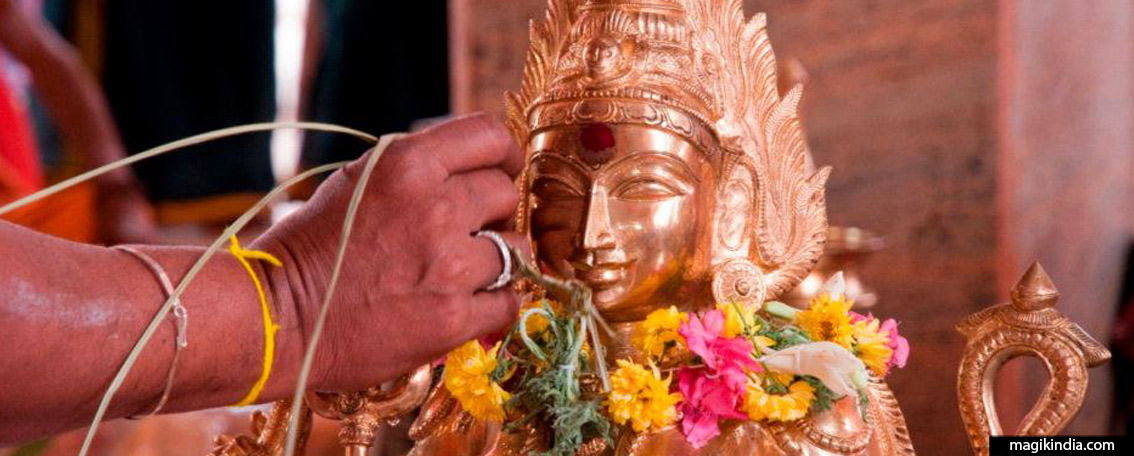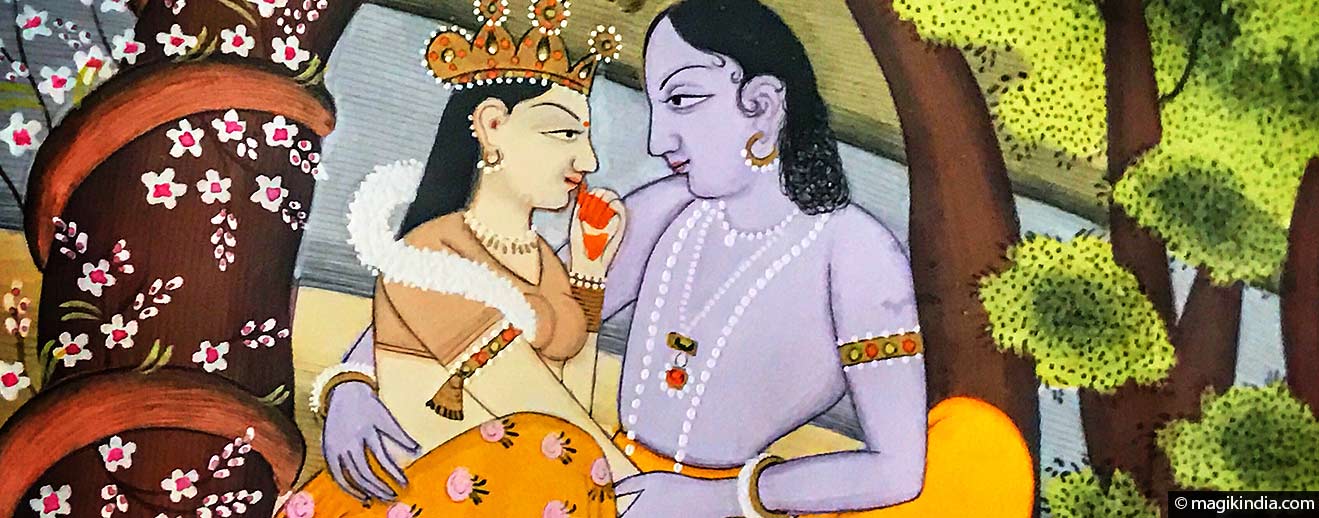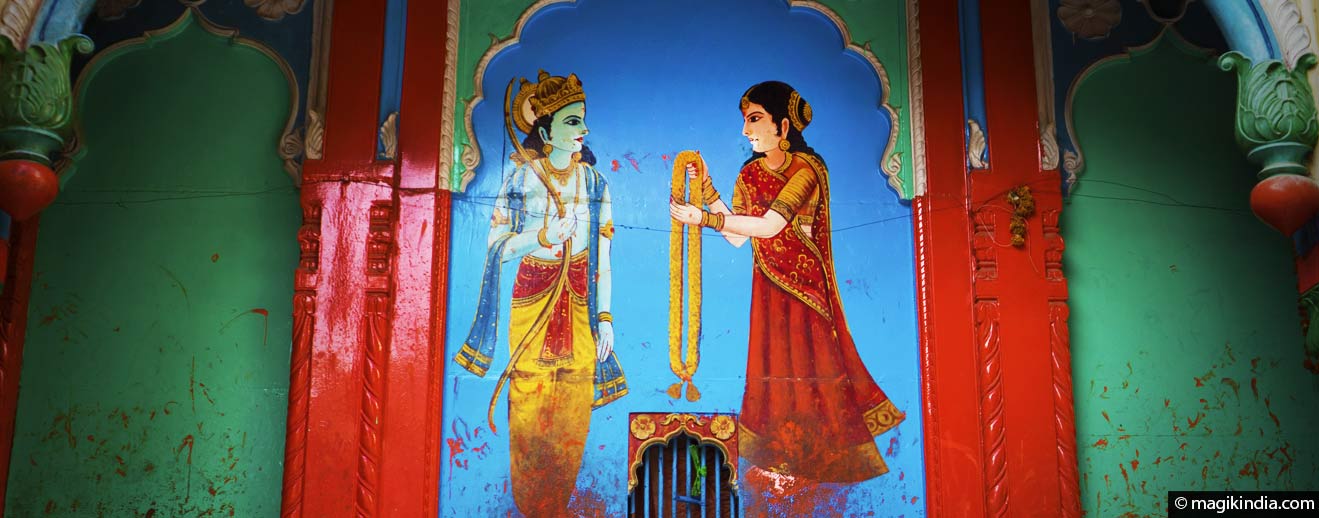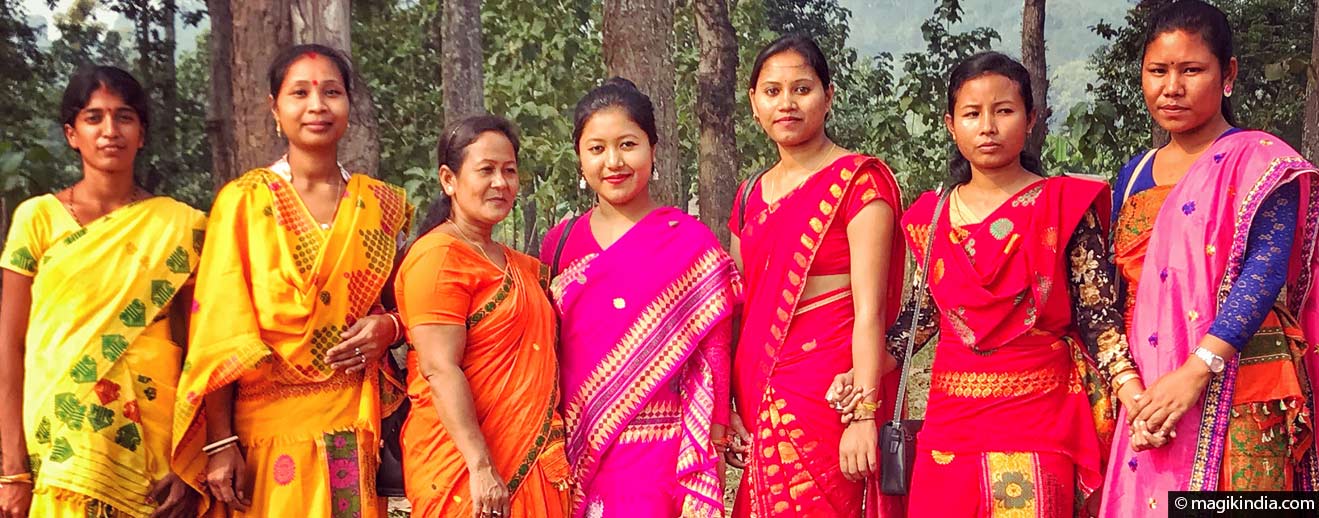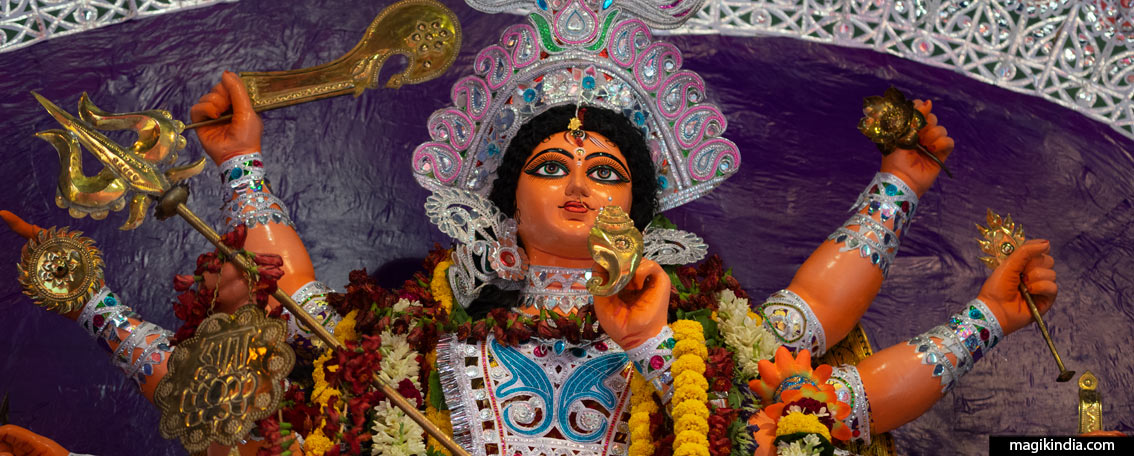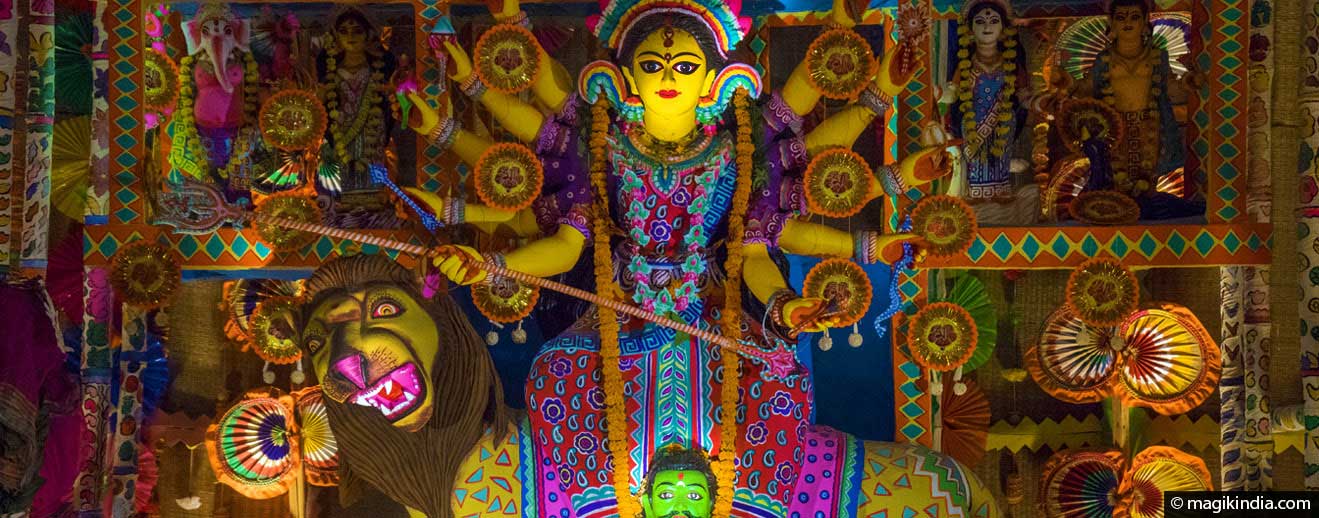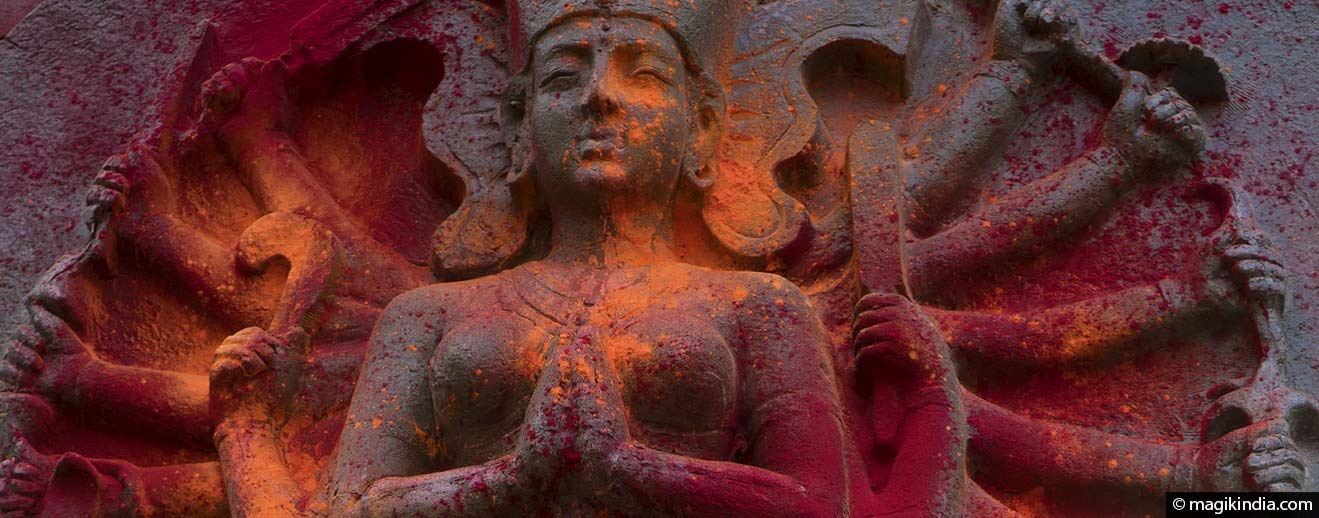
Shakti, the primordial cosmic energy
Shakti means ‘power’ or ‘energy’. It is a fundamental concept in Hinduism, which is often associated with the feminine principal and personified by Devi, Hinduism’s primordial goddess. The Shakti is venerated all over India and devotion culminates during the 9-day festival of Navaratri.
Devi has enumerable forms corresponding to different qualities: she can be Parvati, the benevolent goddess of harmony, Durga, the goddess of strength and courage, Kali, the goddess of destruction or Saraswati, the goddess of art and knowledge.
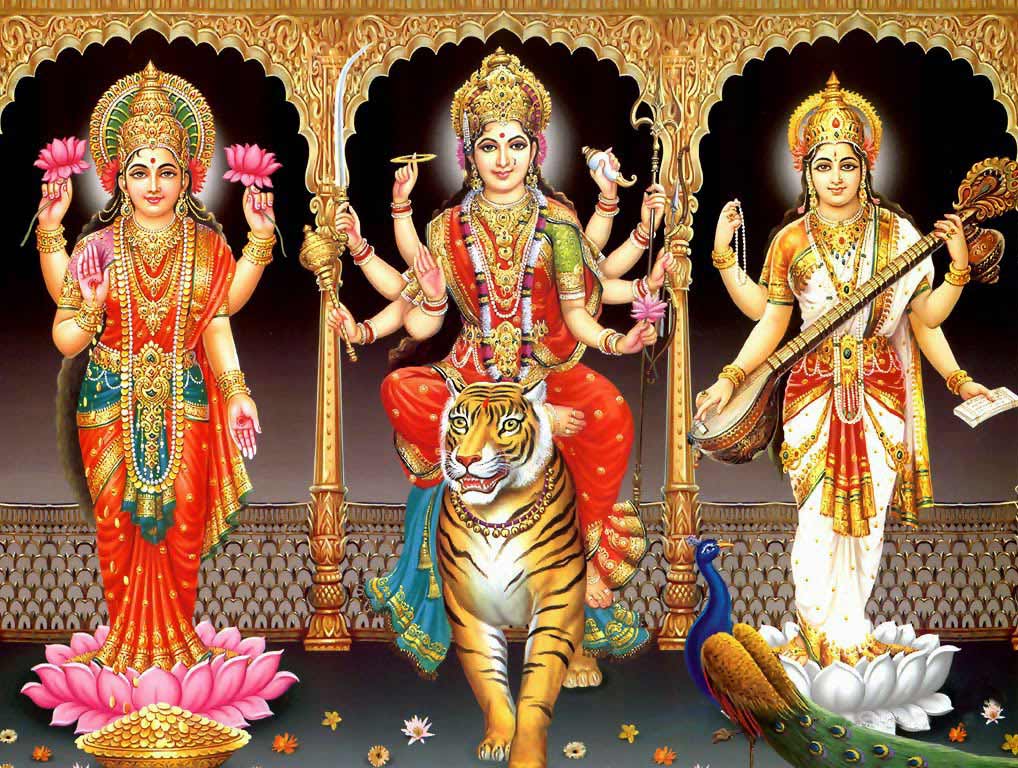
They are regarded as Divine Mothers who nourish, protect or destroy and are equal in importance to the other cults, and even above them as far as the Shakta (adepts of Shaktism) are concerned.
The ‘Shakti’ in Hinduism
“It is only when Shiva unites with thee, O Shakti, that he becomes the All-powerful Lord. Left to himself, he lacks even the strength to raise his little finger.” (Devi Upanishad)
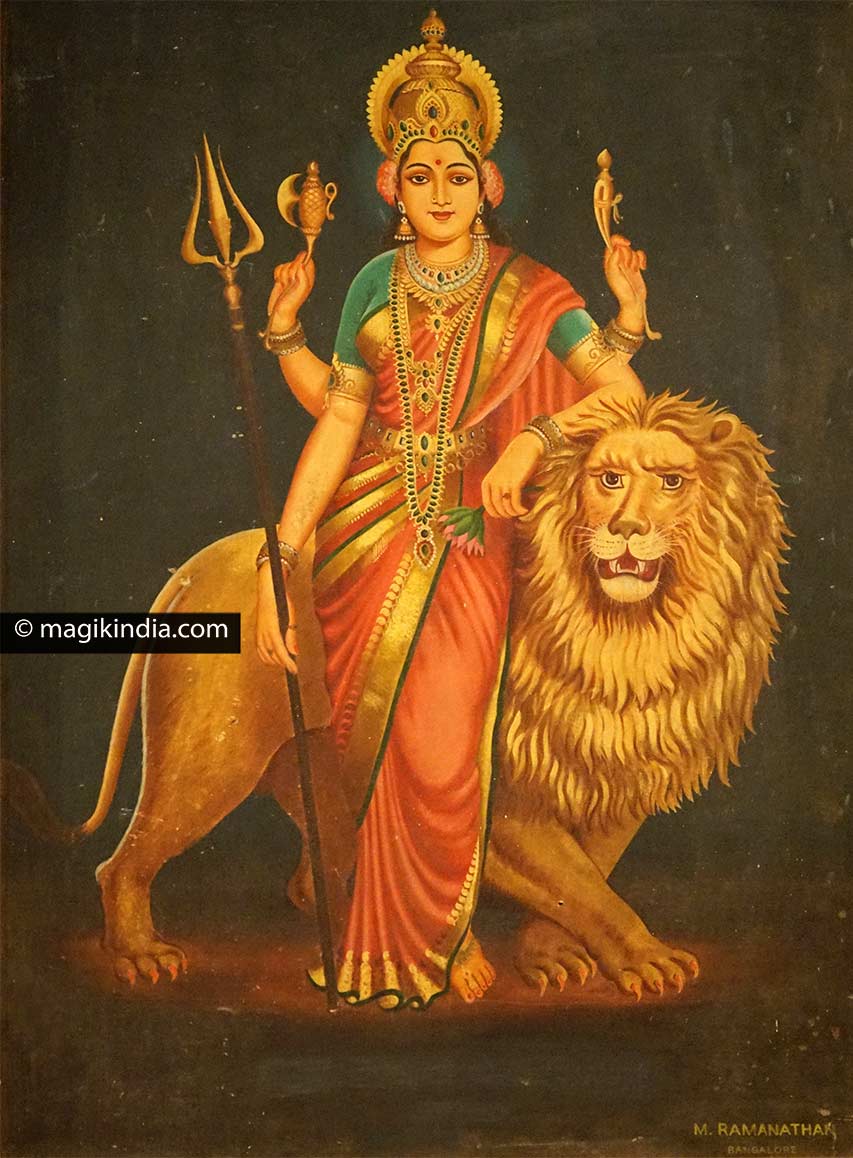
The word ‘Shakti’ derives from the Sanskrit shak, ‘power’ or ‘productive potential’. It is the primordial cosmic energy, the power than underlies creation and existence. It is regarded as the cosmos itself. Not only is Shakti responsible for creation, it is also the agent of all change.
Shakti is often associated with the female creative power which is sometimes called the Divine Mother. In the earthly sphere Shakti is manifested through creativity, fertility and motherhood. But it is also present, though not manifested, in men.
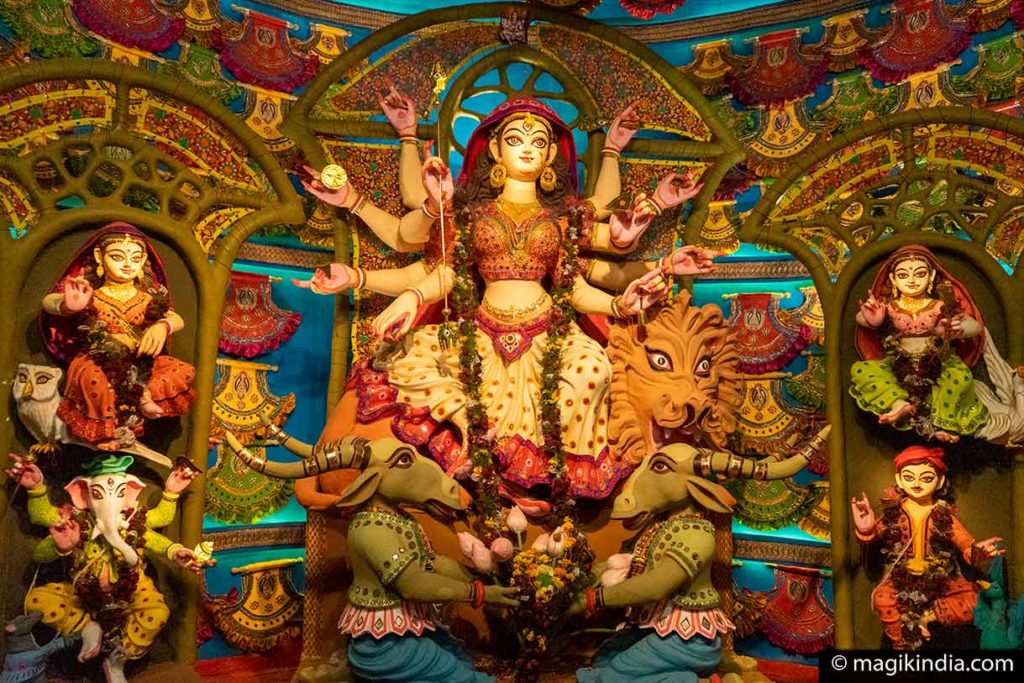
Hindu cosmology contrasts the two concepts Brahman (essence) and Pradhana (existence or shakti). Shakti, the universal mother, is the form that enables Brahman to materialise, to become manifest.
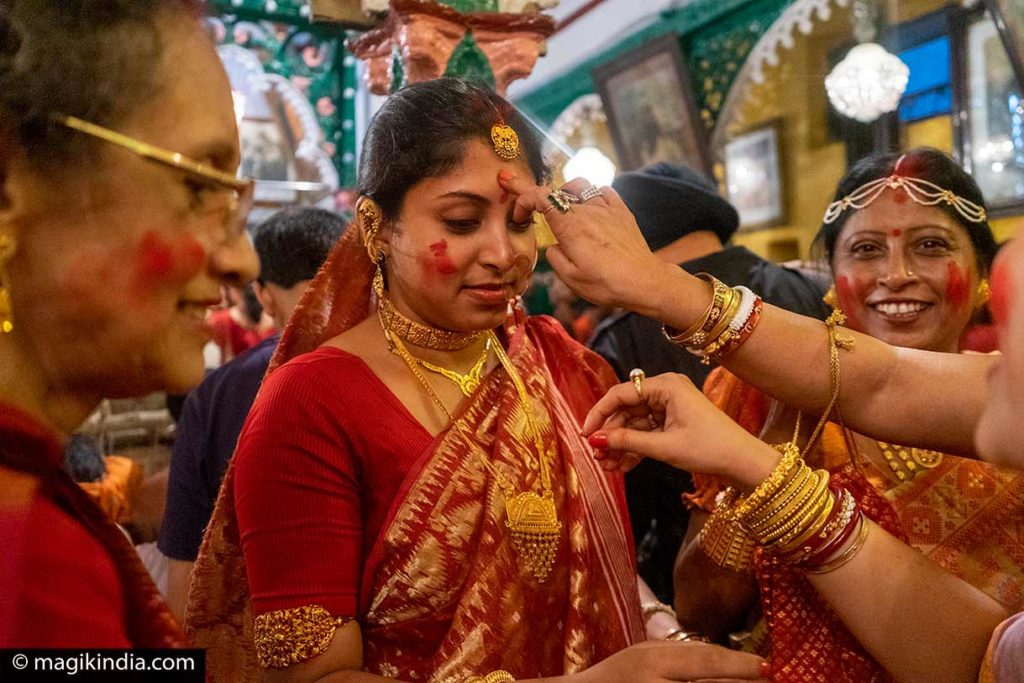
In Shaktism, Shakti is worshipped as the Supreme Being. Shakti embodies Shiva’s active female energy and is identified as Mahadevi or Parvati. Adepts of Shaktism, called Shakta, focus their adoration on the female aspect of the Divine. Shiva, the male aspect of the godhead, and his worship, are generally relegated to an auxiliary role.
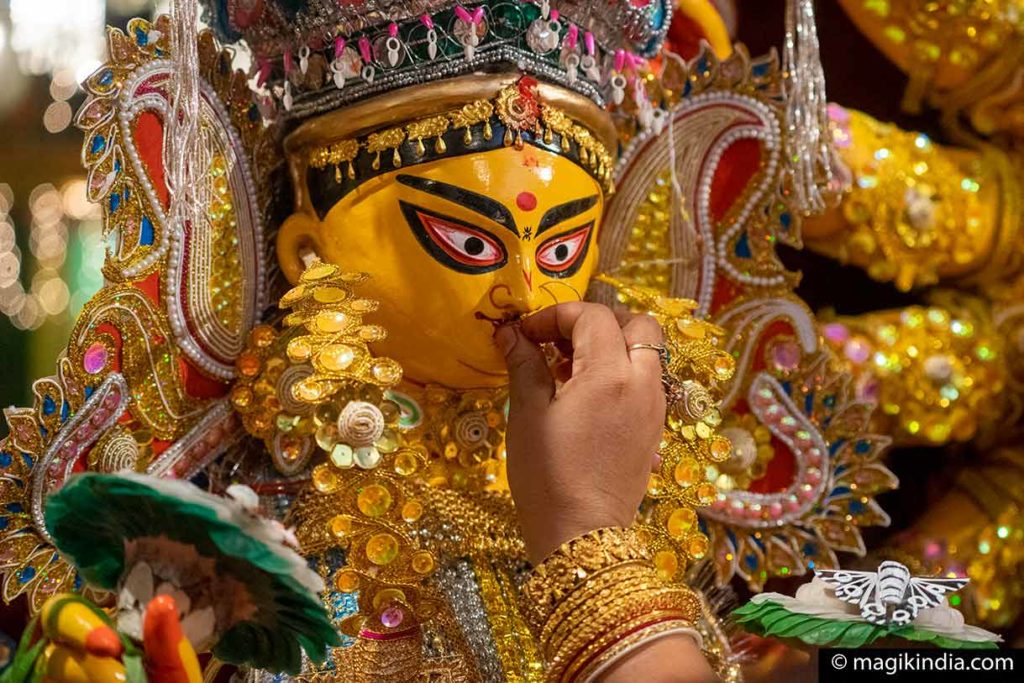
In Tantrism, Shakti defines the union of contraries. The two poles, energy (Shakti) and divine consciousness (Shiva), must be united; they will then remain indissolubly united in the Absolute.
This close union of the male and female principles is symbolised by Ardhanarishvara, a god that is half Shiva and half Shakti, or by the Shiva-lingam. In some branches of Tantrism, this union is not only symbolic: there are Tantric rites designed to achieve that unification in practical terms, through a ritualised form of sexual intercourse.
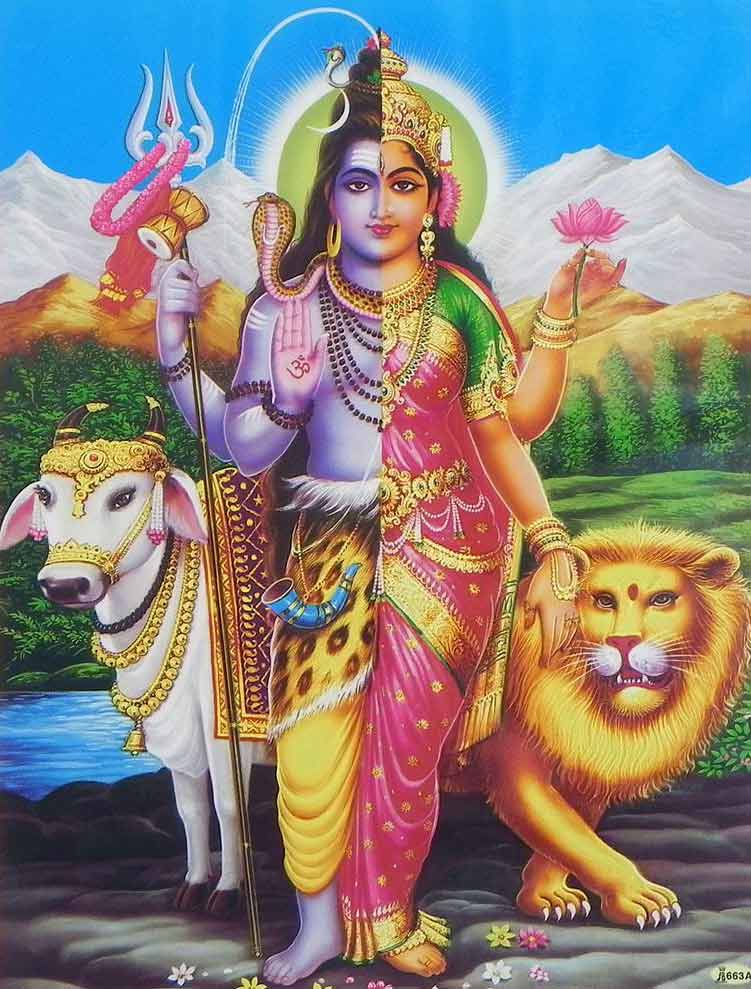
Indian wisdom masters explain Shakti as a force for self-fulfilment, for both men and women. This force is manifested by the awakening of love for the entire universe.
The spiritual path enables Shakti to awaken in the practitioner, producing a state in which the person is freed from all ignorance and begins to see the world as it really is.
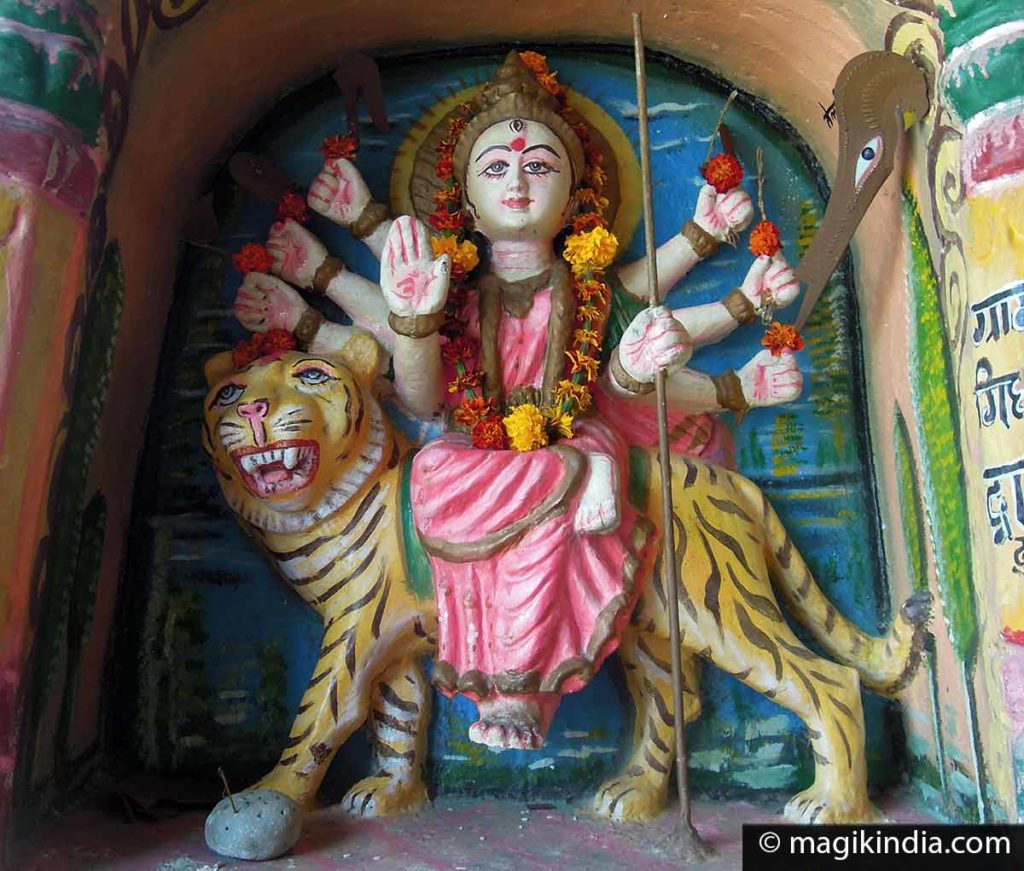
The ‘Shakti’ is celebrated during the ten-day festival of NAVARATRI OR DURGA PUJA
Navaratri is one of the leading Hindu festivals, celebrated with great fervour throughout India. In Sanskrit, Nava means ‘nine’ and ratri means ‘nights’; the Navaratri festival lasts for nine nights and ten days…
KNOW MORE ABOUT ITThe ‘Shakti Peeth‘
There are Shakti Peethas scattered all over India. The exact number is uncertain but some say there are 51 in all. Eighteen are unanimously accepted as Maha Shakti Peethas. Four Shakti Peethas, called Adi Shakti Peethas, are considered the most sacred of all the Peethas.
The origin of the Shakti Peeth
Long ago in the Satya Yuga or Age of Truth, Brahma’s son Daksha performed a yagna (fire ritual) to revenge himself against Shiva.
Daksha was angry because Sati (one of his 27 daughters) had married Shiva against her father’s wishes. Daksha invited all the gods to the yagna, except Shiva and Sati. But Sati wanted to go.
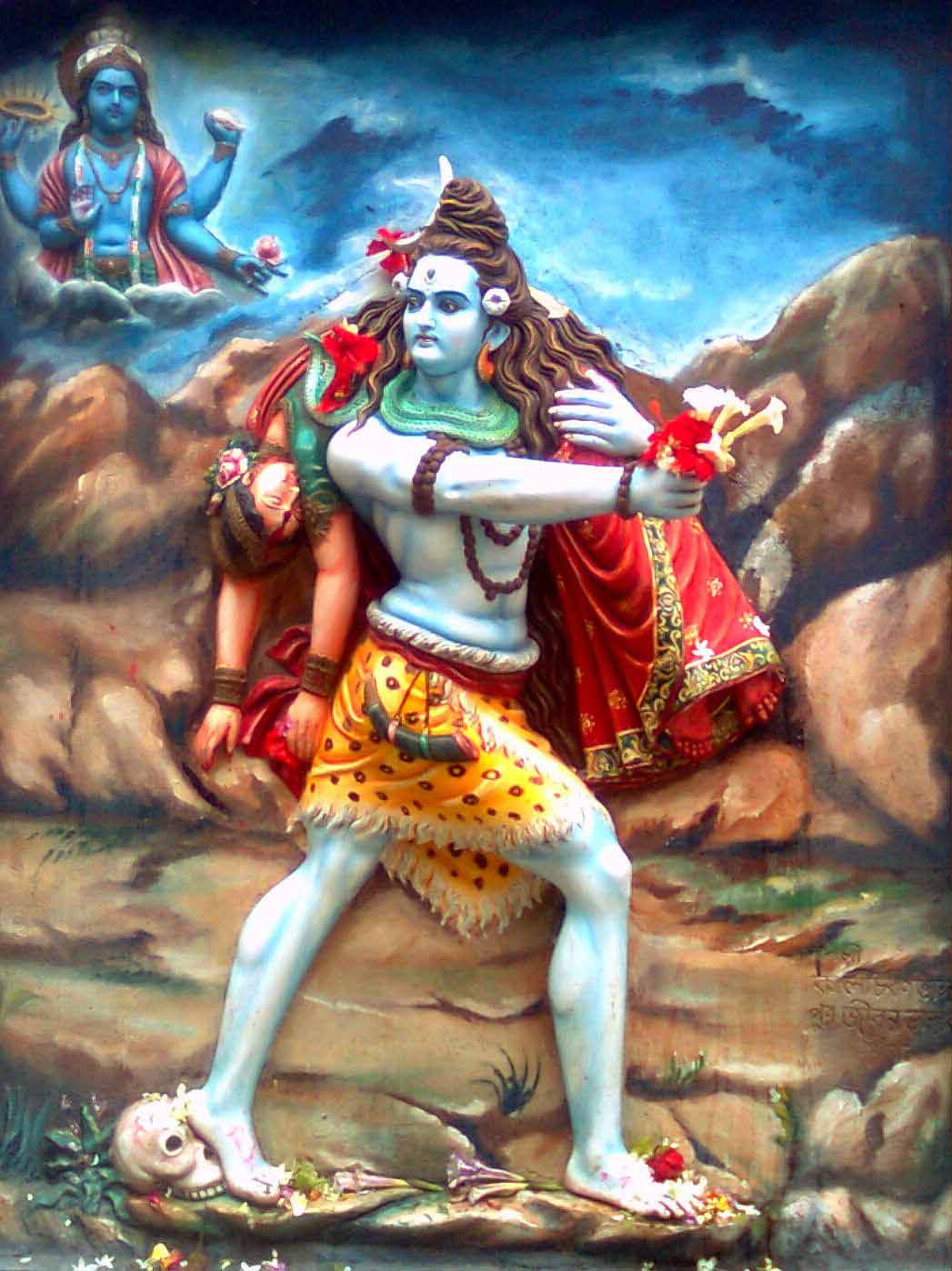
Shiva tried to dissuade her, but agreed to let her go with an escort of ganas (disciples). But Daksha gave her a frosty reception and even insulted Shiva. Sati was so offended that she threw herself into the fire lit for the yagna.
When the news of Sati’s self-immolation reached Lord Shiva, he was mad with rage. He set off with his ganas to the place where Daksha was performing his yagna, destroyed the site and beheaded Daksha.
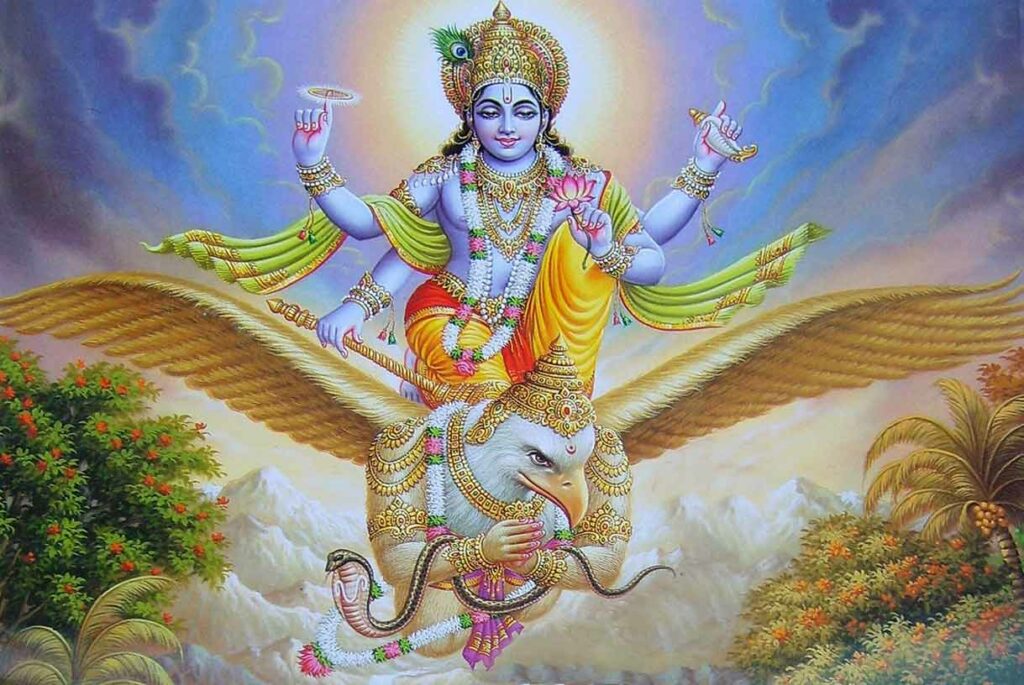
Shiva then took up Sati’s body in his arms and began to dance a furious Tandava, his cosmic dance, menacing to destroy the world.
To appease Shiva’s anger, Lord Vishnu (the preserver of the world) cut the body of Sati into several pieces with his disc-shaped weapon, the Sudarshana Chakra.
Different parts of Sati’s body fell in various places around India: these are the places known as Shakti Peethas.
SEE THE LOCATION OF THE SHAKTI PEETH
